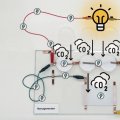
If Australia is to achieve a net zero future, we need “out-of-the-box” thinking and a major economic overhaul, according to study involving The University of Queensland.
Interim modelling from the Net Zero Australia Project, which is a collaborative partnership between UQ, The University of Melbourne, Princeton University and Nous Group, shows achieving a net zero future will be far more complex than anticipated.
It also shows there would be an extra one million jobs in the energy sector.
UQ’s Project Director Associate Professor Simon Smart, from the Dow Centre for Sustainable Engineering Innovation, said the necessary transition would be both an immense challenge but also a once-in-a-generation nation building opportunity.
"This interim modelling shows that the scale and pace of what we need to build is unprecedented,” Dr Smart said.
“If we keep building the way we have done, it is likely we will go too slowly towards a net zero future - we need to think differently about the required infrastructure and technology.
“From these results we can see huge benefits on the horizon, including employment and a future where domestic energy will be less prone to price shocks.”
The modelling analysed five possible zero emissions scenarios and consequences of reducing emissions by using renewables, carbon capture utilisation and storage, and replacing technologies that use fossil fuels with ones that use electricity, such as electric vehicles.
“We assessed the progressive impacts of each scenario on emissions, infrastructure, costs, employment, land and sea use change, and other important outcomes,” Dr Smart said.
UQ researchers have primarily been involved in energy system modelling and examining the scale of transformation that would be required in the industrial sector.
“The results show that with electrification of some sectors and improved productivity with new technologies, energy use could actually reduce, even as the population and GDP continue to grow,” Dr Smart said.
The results form part of a wider study being undertaken by the Net Zero Australia Project. Final results will be available mid-next year and will include an analysis of how communities and households could be impacted, and how they can help.
Net Zero Australia Steering Committee Chair, Professor Robin Batterham said to meet net zero by 2050, Australia must transform.
“Now that we have a national net zero target for domestic emissions, the challenge is to work out how the target can be achieved,” Professor Batterham said.
“This study provides insights that are objective, detailed and transparent. We hope it will help governments, businesses and the public to reach decisions on their contributions to the decarbonisation task.”
Detailed interim report findings and more details are available on the Net Zero Australia website.
Media: UQ Communications, communications@uq.edu.au, +61 (0)429 056 139.









